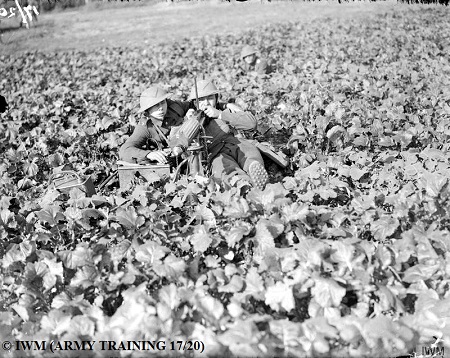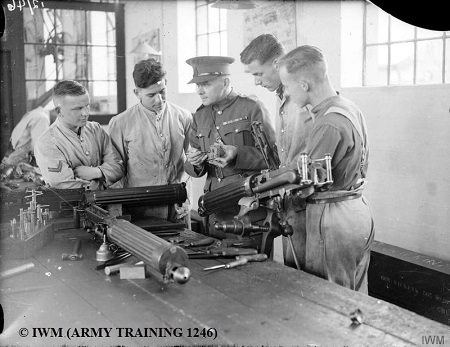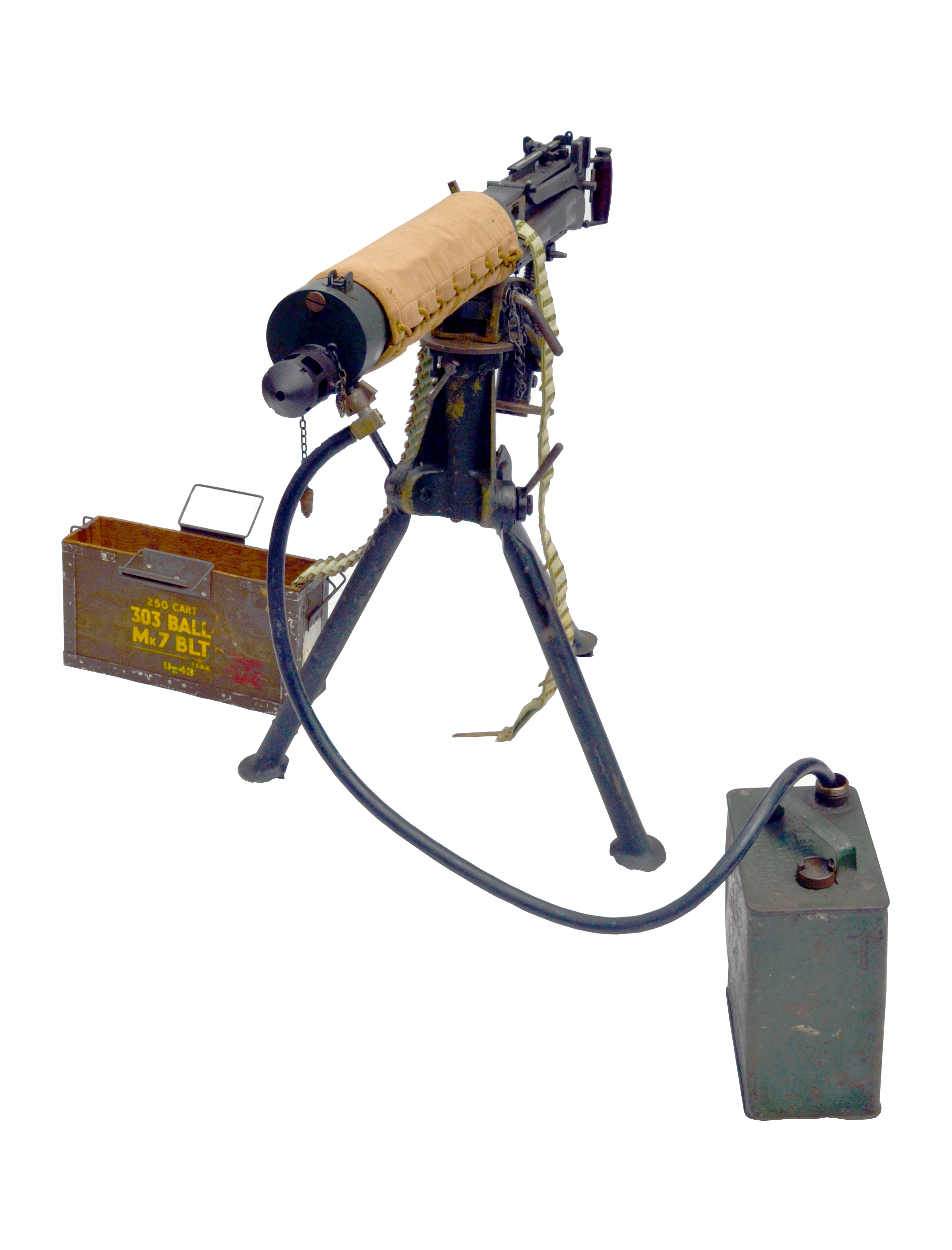
The Vickers machine gun is a water-cooled, belt-fed .303 inch (7.7 mm) calibre gun which was an adaptation of the Maxim machine gun. First introduced in 1912, it had a solid reputation for reliability. Maxim's original design was sold and produced under licence worldwide; however, it took the engineering excellence of Vickers to fully realise the potential when they (along with Maxim) further evolved the concept into what would become the Vickers. The Vickers machine gun is essentially a lightened and slightly smaller version of the original Maxim design. This was achieved by reversing the internal crank mechanism, which allowed for a shallower box behind the barrel and cooling jacket, along with utilizing a corrugated mild steel casing for the water jacket. The redesigned jacket allowed for a thinner gauge of metal to be used without compromising the pressure capacity required, when firing would convert the water to steam.
The cooling jacket surrounded the barrel and a brass condensing tube, located at the top of jacket, which would collect the steam and channel it towards a vent. Originally there was no effort made to collect the steam once it left the vent; however, experience in WW1 quickly showed that by failing to do so would, on cold days, result in a column of steam rising into the air, thus exposing the location of the gun. This was rectified by a rubber condensing hose attached to the vent and the steam being channelled into a suitable container (in the case of the Vickers, spare fuel cans were used), collecting the then-condensed water and enabling it to be reused.

Typically, the gunwas crewed by a team of six to eight men. The gunner (who fired the gun when in position) was responsible for transport of the actual gun, while his No. 2 (the loader), was responsible for clearing any jams when firing and transporting the tripod, in addition to actually loading the belts (250 rounds per belt). The rest of the gun's crew acted as pack mules for keeping them supplied with ammunition. The Vickers had a rate of fire of 600 rounds per minute and was deployed in batteries, having their fire directed in a similar fashion to that of artillery.
Our example was made in Australia after Dunkirk and is mounted on a 1915 tripod.
Back
